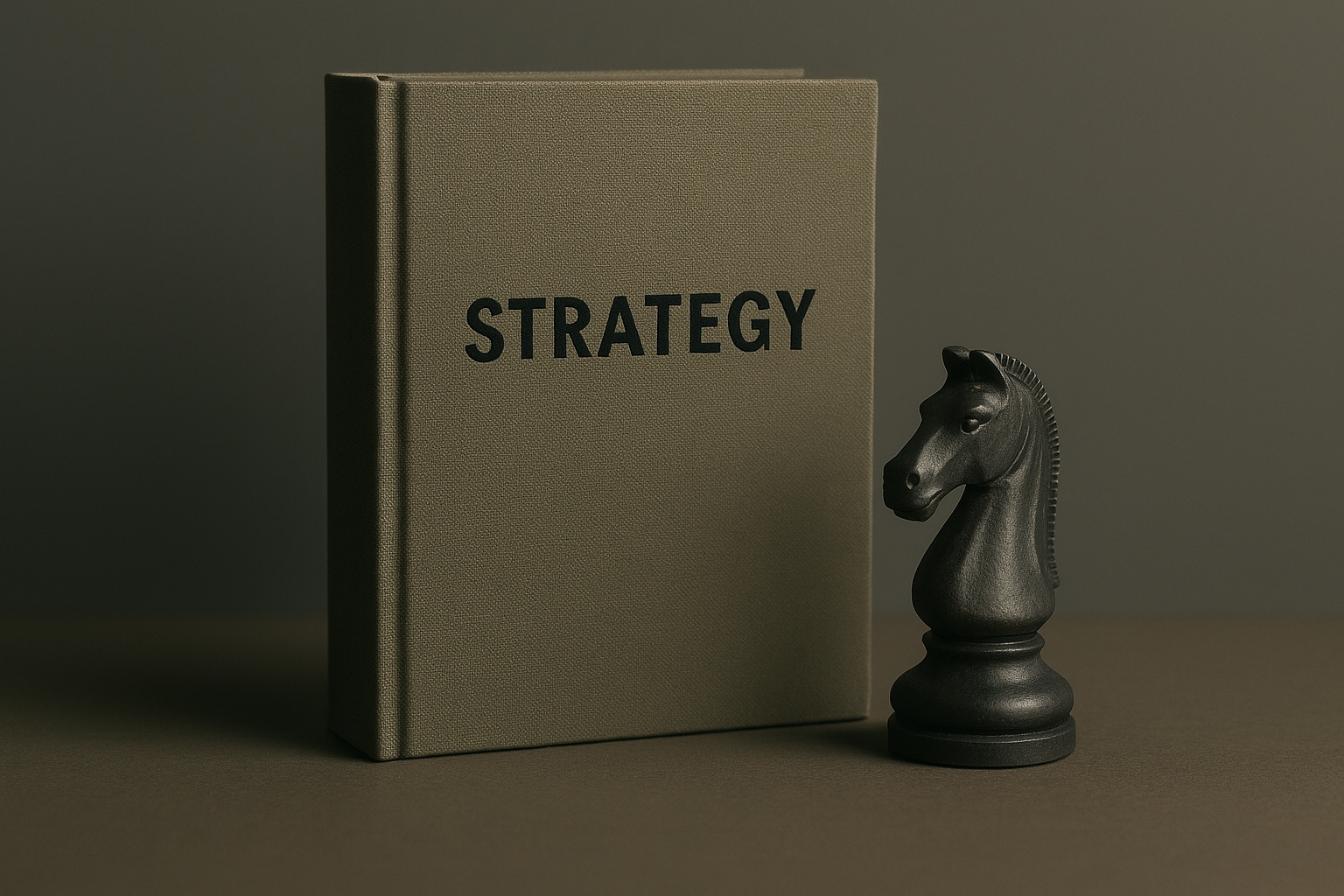A Practical Return to Strategy Classics
Strategy has always been a fascination of mine and a craft worth mastering, so I’m setting out on a reading project to explore it more deeply. Over the next several months I'll go back to the basics of strategy. I'll read through some of the classics that laid the groundwork for strategic thinking – revisiting timeless ideas and concepts that have guided leaders for centuries, and clear away the noise, tighten focus, and strengthen my own strategic foundation.
I'll take a phased approach to my reading and apply a simple framework – read, reflect, apply. I think I'll divide the reading into 4 phases and publish either a post per phase or per book. Below is a rough outline of the approach and books, and what I'll have in the back of my mind as I tackle each book.
Phase 1 – Core Principles (Weeks 1-6)
Objective: Lock down timeless strategic fundamentals.
Read:
- The Art of War by Sun Tzu – indirect strategy, deception, and positioning.
- The Prince by Niccolò Machiavelli – realpolitik and pragmatic power.
- Good Strategy Bad Strategy by Richard Rumelt – diagnosis → guiding policy → coherent actions.
Reflect:
- Extract first principles from each book.
- One-line summary per chapter.
Apply:
- Audit one situation at work/life using Sun Tzu + Rumelt:
- Diagnosis (What’s the real problem?)
- Guiding Policy (What core idea will guide action?)
- Coherent Actions (How do we execute it?)
Phase 2 – Systems & Uncertainty (Weeks 7-14)
Objective: Build usable mental models for complex, dynamic environments.
Read:
- Thinking in Systems by Donella Meadows – stocks, flows, feedback, leverage points.
- On War by Carl von Clausewitz – friction, chance, and the fog of uncertainty.
- Superforecasting by Philip E. Tetlock – probabilistic decisions and calibration.
Reflect:
- Pick 3 systems in life (team dynamics, time use, habits).
- Map them using Meadow's systems structure (stocks, flows, feedback loops).
Apply:
- Start a decision journal: forecast → rationale → confidence → outcome.
- Track predictions (business, markets, people). Review monthly and recalibrate.
Phase 3 – Power & Human Dynamics (Weeks 15-20)
Objective: Understand how power works in human systems and how to maneuver within them.
Read:
- The 48 Laws of Power by Robert Greene – tactics, traps, and leverage.
- The 33 Strategies of War by Robert Greene – tactical mental models.
- Poor Charlie’s Almanack (Charlie Munger) – multidisciplinary thinking and inversion.
Reflect:
- Identify power dynamics in a current professional situation.
- Map your strategic position (leverage, allies, terrain).
Apply:
- Create power maps of your workplace: who holds influence, why, and how it’s maintained.
- Test one “law” tactically in a controlled, low-risk way; measure the signal.
Phase 4 – Resilience & Future Vision (Week 21-28)
Objective: Build a resilient, long-range strategic lens.
Read:
- Antifragile by Nassim Nicholas Taleb – stress-driven growth, optionality, skin in the game.
- The Sovereign Individual by James Dale Davidson & William Rees-Mogg – macro-level strategic positioning.
- Zero to One by Peter Thiel – creation vs competition, vertical strategy.
Reflect:
- Where are you fragile, robust, or antifragile?
- How would a sovereign individual act in your current situation?
Apply:
- Design a personal barbell strategy: one stable stream/skill + one high-risk/high-reward bet.
- Set a 10-year positioning goal and identify three immediate actions.
If any of this sparks your curiosity, feel free to follow along – or even take on the reading yourself.
– Martin
